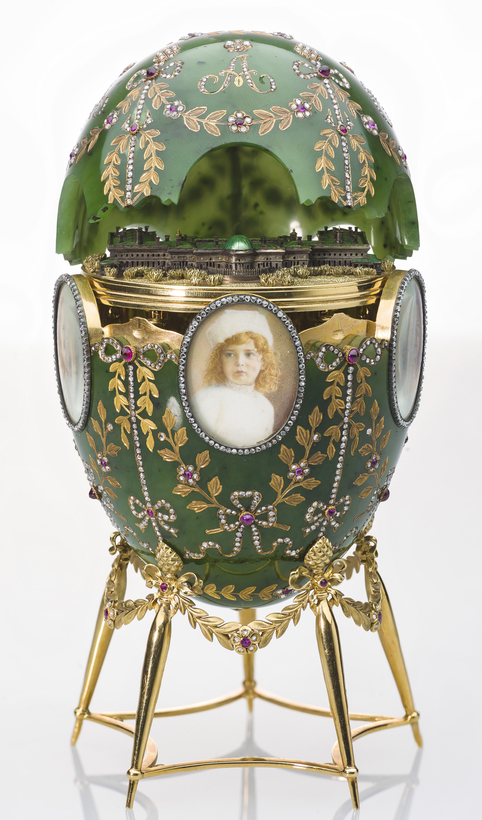When the imperial Russian goldsmith Peter Carl Fabergé opened a store in London, in 1903, the news met a frosty reception in St. Petersburg. “Now that that silly Fabergé has his shop in London,” complained Maria Feodorovna to her sister Queen Alexandra of England, “you have everything, and I can’t send you anything new, so I am furious.” Exchanging gifts was an important protocol in Edwardian society, a facet of the social balls and weekend house parties that defined a season. Until World War I officially ended the era, it was a golden age of gift giving.

Immediately, the higher echelons of British society flocked to Fabergé to buy exquisite bejeweled flower and animal studies. Jeweled bell pushes to summon a servant, bonbonnières, smoking accessories, enameled dog bells, table clocks, photograph frames, and figurines assembled from Siberian stones—all were among the objets de fantaisie that graced the tables in stately houses across the land.
Now more than 200 of these masterpieces, including 15 imperial eggs, are on display at London’s Victoria and Albert Museum in “Fabergé in London: Romance to Revolution,” an exhibition opening today that explores the art of Fabergé as well as the romance of a long-gone and carefree era.
Gifts were personal and carefully chosen, often with the help of Henry Bainbridge, who managed the London shop and recorded clients’ pastimes, likes, and dislikes. The elegant Art Nouveau cigarette case that royal mistress Alice Keppel gave to King Edward VII, decorated with a snake biting its tail, inlaid with diamonds—a symbol of everlasting love—was a clear sign of her feelings for him. Fabergé gifts were a signal that a relationship was “in danger of becoming serious,” wrote Vita Sackville-West, who equated them with receiving lingerie.
The upside of this Edwardian luxury meant interiors glittering with delightful gold and enamelwork conversation pieces. The downside? If you couldn’t afford to give gifts of Fabergé to between 20 and 30 other guests, as decreed by Lady Alington for her Christmas parties, well, you simply couldn’t attend.

As the antiquarian Dame Joan Evans has noted, “small objects made for its dominant class” reveal the essence of an age. This was an era when social currency was gained by closeness to the monarch.
King Edward VII and Queen Alexandra illuminated their Fabergé pieces in cabinets in the white drawing room at Sandringham House, and with each houseguest a new piece would be added to the collection. Cabinets and tabletops in royal residences were awash with whimsical lapidary animals, among them the king’s favorite terrier, Caesar; horses in royal racing colors; and a “royal farmyard.” The Royal Collection Trust has loaned 80 pieces for the exhibition. —Carol Woolton
“Fabergé in London: Romance to Revolution” opens November 20 at the Victoria and Albert Museum


 Discover
Discover